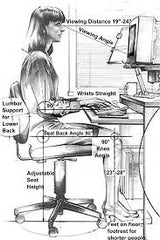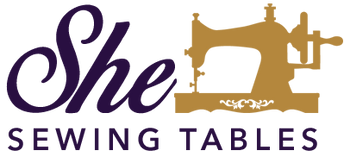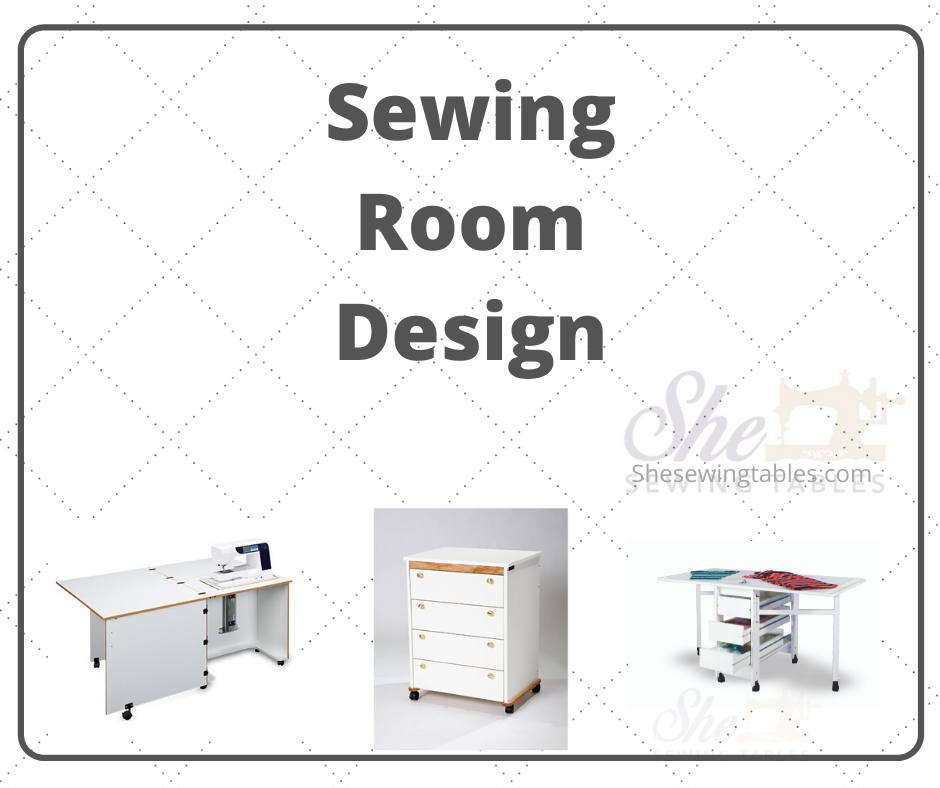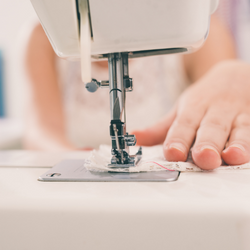With your love of creativity in mind, your sewing room design needs to be a well thought out space, one you can function in with ease.
A lot of time is spent at the sewing machine, crafting the projects that you pour your heart into.
Be sure to take the time to put some thought into the whole design of your sewing space around you as well. A lot of factors contribute to how well you can function in your workspace.
Let’s consider a few.
Lighting
Functional lighting is necessary but using some personality in your hobby room is fun. Natural lighting needs to be considered first. If you can, set your sewing machine sideways to your window – not directly in front of the window, as the window can cause a glare directly in front of you.
Quality lights make it so much easier on your eyes, have enough lighting that you do not find yourself working in shadows. Poor lighting can even make you sleepy.
Work Table
Having a work table separate from your sewing table makes your working flow quite easy. If you do not have to move your sewing machine, iron or other tools to have a table to lay your projects on, it is wonderful. Sometimes your cutting table can double for a work table.
Sewing Table
Sturdy! If you have tried to sew on a flimsy table you know what a challenge this is. The sewing cabinets have a lot more support than a card table.
SIZE:
Speaking from my own sewing experience, make your sewing table as large as you can. Especially if you create quilts and other large projects. When your space to sew is small consider a sewing table that can fold up small, but open into an ample workspace. It is very frustrating to have your project falling off of your sewing cabinet. Your sewing table is usually the central focus of your sewing room - you will probably be spending many hours here.

HEIGHT:
Make it comfortable for you! The newer sewing tables have custom heights that can ease the posture in which you sew for hours. See Ergonomics below.
TYPE OF SEWING
Embroidery sewing and using a serger add a whole different element into your sewing needs. Having a place to set up all your sewing machines at the same time gives you the best of your workflow options. Will you stand to embroider, or sit? Can your serger sit beside your sewing machine, or does it need a separate cart? Do you need a place to store your sewing machine when you are not using it? Make sure you have a place for your embroidery module to be stored.
Sewing Machine Lift
Why would you want a Lift for your sewing machine?

Some of the new sewing machines can weigh a lot. If moving your sewing machine is difficult for you, a lift makes moving your sewing machine around so much easier. The Lift also perfectly adjusts the three positions of your sewing. 1.) On top of your sewing table for embroidery work or free-arm sewing, 2.) sewing on the flat surface of your sewing table, 3.) Storage position under the tabletop of your sewing cabinet.
Ergonomics
Be sure your sewing room furniture is designed for efficiency and comfort in the working environment. If you have needs that are shorter or taller, consider purchasing sewing tables and cutting tables have customizable heights. It can make a huge difference to your aching back! Some work tables have enough height adjustments that you can sit or stand while you sew – great feature! Notice particularly the position on the feet, thighs, elbow to wrist, and back posture in the picture below.
I found some excellent articles on ergonomics for sewing at https://suzyquilts.com/author/jenni-grover/

Storage
We like to have a stash of projects. After all, the fabric is a bit like cheese, it gets better with age. 😊
Plan ahead for where you will have your fabric and crafting supplies. With a cupboard to display fabric, you can see your fabric at a glance and easily remove and add to it, without the whole pile of fabric falling. Books, patterns and tools all need a place to rest.
Organizing what we have on hand makes it so much easier to find when we're looking for the perfect thing to coordinate with our sewing project.
Do you prefer drawers, to tuck everything away, or shelves to see it all at a glance?
Computer
Some sewing machines can work off of a computer, have you allowed a place for the computer to sit? Some sewing tables can be ordered with a 110v outlet added to your sewing table – a great way to cut down on the electrical cords in your sewing room.
Patterns and How-to Books
Patterns Mom gave you, patterns collected from the Guild, patterns off Pinterest… they need a place to go! Again, shelves or drawers, where do they need to be to serve you best?
Traffic Flow
Perhaps this one is overlooked. How will you walk around your sewing room? Allow ample room to move all the way around your project. Think through entry into space, as well as exit. Does your space need room for more than one person?
Color
Coordinate your sewing studio colors is fun and gives you a peaceful feeling in your room.
White Space
If your room allows, give yourself some open space. It can make your room feel like enough – not every nook and cranny needs to be filled. This is a good reason to have some of your storage behind a closed door, giving your room a fresh clean uncluttered appearance.
A Thought
Know yourself. Do you thrive in a busy, rather cluttered area, or does your mind function better if you have some empty space around you?
Try to have all the tools needed for each station - all ironing tools handy near the iron, cutting tools with the cutting table.
Grid Paper
One way to get a visual of how your sewing room will look, and how much space you have for traffic flow is to use grid paper. Draw out the sizes of your sewing furniture and other elements in your room according to scale.
Or perhaps you would prefer to cut out the actual size of the furniture you are dreaming of adding to your sewing room from a paper or cardboard. Then place them where you think you would like them best. Check the fit.
To Wrap it Up
While we tend to think of our sewing table as the focal point in our sewing studio, there really are a lot of other factors that make up our sewing space. Take the time to think these through to make the most of your creative space. Then you will be even more delighted with your choice of the sewing table.
We look forward to helping you pull your sewing room together!




